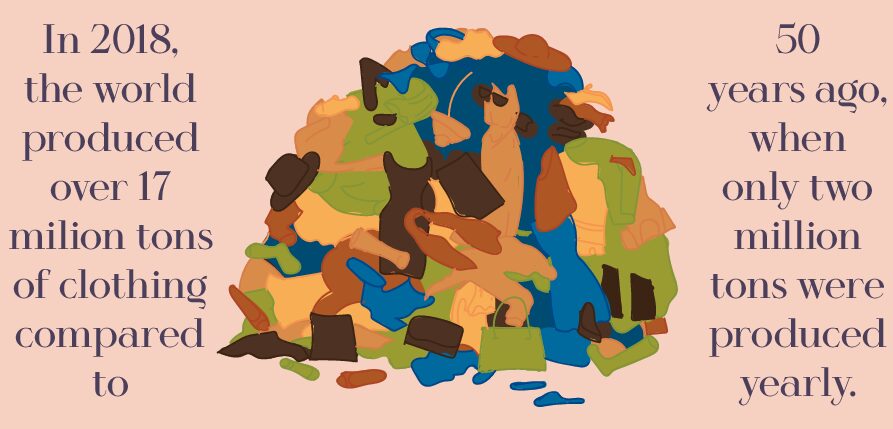
photo credit: Mackenna Miller
In 2019, about 40 percent of Gen Z were buying second-hand clothing, compared to less than 30 percent in 2016, according to a report by ThredUp. In 2018, the world produced over 17 million tons of clothing, according to the Environmental Protection Agency compared to about 2 million just 50 years ago.
Within the past few years, shopping at thrift stores, or ‘thrifting’ has become a trendy way to shop for clothes. While thrifting is not necessarily negative in any way, its popularity and the way some utilize it has brought negative effects, including a raise in prices and less clothing actually ending up in the stores.
Out of that massive amount of production, 11.3 million tons entered the landfill. Although thrift shopping may seem like a trendy and environmentally friendly way to shop, at the current rate of consumption it is not necessarily beneficial.
In reality, the waste produced by thrifting and the fast fashion industry are not much different. The appeal of ‘guilt free shopping’ because of the inexpensiveness and supposed sustainability causes customers to buy articles of clothing that they don’t necessarily need.
Many believe that thrift shopping can assist with this vast percentage of waste produced by large clothing industries and is an excuse to overconsume. However 10 to 20 percent of clothing donated to Goodwill is resold and the other 80 percent is shipped to other countries such as Poland, Pakistan, and Kenya, or they are recycled. Recycling textiles is energy intensive and wasteful.
Since the vast majority of the clothing donated to Goodwill is thrown away, simply donating one’s clothing should not be the guilt-free solution to overconsume something they may not wear.
On multiple social media platforms, it’s easy to find influencers displaying their ‘thrift hauls’ of tons of articles of clothing, and it can be argued that this is overconsumption. Fans have begun to flock to thrift stores, mimicking this behavior and participating in overconsumption.
Influencers such as Emma Chamberlain have posted videos on YouTube, having entire series of hauls, reviewing clothes that are unable to be returned. The popularity of these influencers has increased the popularity of thrifting.
On top of this, Depop, a popular shopping site created to resell old clothing, has also been utilized to sell items people find at thrift stores for high prices, especially high value or vintage clothing that they happened upon. This may not seem like an issue, but it is proven that thrift stores have jacked up their prices because of this.
While the price increase as of now may not seem significant, if the rise in popularity continues, it can become a huge issue for people who need thrift stores to purchase clothing because of the cheap prices.
This is an issue because it is not people in need who overconsume secondhand clothing, it is people looking for a new way to overconsume cheap clothes, as fast fashion has been deemed ‘unethical’ in other controversies involving sweatshops.
Low-income shoppers in need of a way to purchase cheap clothing may be priced out, as thrift stores have jacked up their prices due to an increase in demand. It allows for an even smaller set of options for low-income consumers.
Thrifting is not overall negative, and it still is a good option if looking for an inexpensive way to shop, however, it is important to remember the purpose and who the overconsumption may be affecting.


